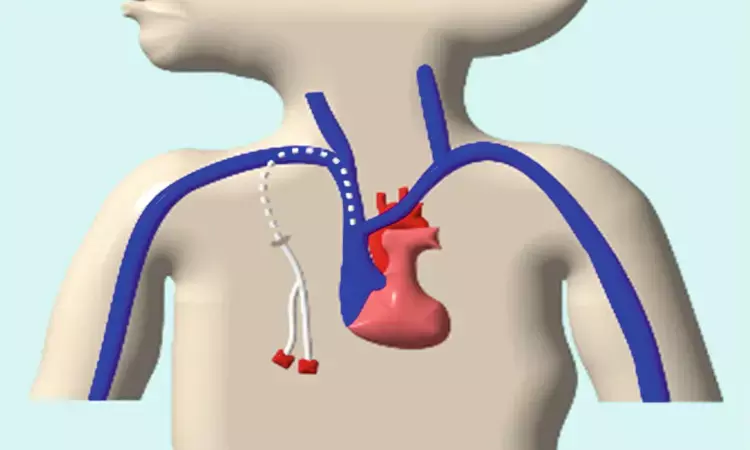- Home
- Medical news & Guidelines
- Anesthesiology
- Cardiology and CTVS
- Critical Care
- Dentistry
- Dermatology
- Diabetes and Endocrinology
- ENT
- Gastroenterology
- Medicine
- Nephrology
- Neurology
- Obstretics-Gynaecology
- Oncology
- Ophthalmology
- Orthopaedics
- Pediatrics-Neonatology
- Psychiatry
- Pulmonology
- Radiology
- Surgery
- Urology
- Laboratory Medicine
- Diet
- Nursing
- Paramedical
- Physiotherapy
- Health news
- Fact Check
- Bone Health Fact Check
- Brain Health Fact Check
- Cancer Related Fact Check
- Child Care Fact Check
- Dental and oral health fact check
- Diabetes and metabolic health fact check
- Diet and Nutrition Fact Check
- Eye and ENT Care Fact Check
- Fitness fact check
- Gut health fact check
- Heart health fact check
- Kidney health fact check
- Medical education fact check
- Men's health fact check
- Respiratory fact check
- Skin and hair care fact check
- Vaccine and Immunization fact check
- Women's health fact check
- AYUSH
- State News
- Andaman and Nicobar Islands
- Andhra Pradesh
- Arunachal Pradesh
- Assam
- Bihar
- Chandigarh
- Chattisgarh
- Dadra and Nagar Haveli
- Daman and Diu
- Delhi
- Goa
- Gujarat
- Haryana
- Himachal Pradesh
- Jammu & Kashmir
- Jharkhand
- Karnataka
- Kerala
- Ladakh
- Lakshadweep
- Madhya Pradesh
- Maharashtra
- Manipur
- Meghalaya
- Mizoram
- Nagaland
- Odisha
- Puducherry
- Punjab
- Rajasthan
- Sikkim
- Tamil Nadu
- Telangana
- Tripura
- Uttar Pradesh
- Uttrakhand
- West Bengal
- Medical Education
- Industry
Ultrasound guided percutaneous insertion safe in children: JAMA

Australia: Ultrasound guided percutaneous insertion of central access catheters is safe for children, suggests a recent study. According to the study, published in the Journal of Surgical Research, the ultrasound guided percutaneous insertion reduced operating time and preserved vein size.
Soundappan S.V. Soundappan, University of Sydney, NSW, Australia, and colleagues aimed to compare open insertion to ultrasound guided percutaneous insertion of central access catheters performed in a tertiary pediatric hospital in terms of its safety and complication rates.
For the purpose, the researchers designed an ethics approved prospective randomized trial of 108 children (Right internal jugular vein was accessed in 97) under 16 y of age. The procedure was performed by surgeons having varying experience with percutaneous and open insertion.
Primary outcome studied was complications-immediate and late. Secondary outcomes were time taken to complete procedure, conversion rates, duration of line use.
Key findings of the study include:
- Eighty-one lines were double lumen, 23 implantable access devices, and the rest were single lumen catheters.
- More than one needle puncture was needed in 22% of the cases but there were no conversions in the ultrasound group.
- Twelve patients needed more than one insertion to achieve optimal position of the tip.
- Eleven patients had immediate and late complications.
- Percutaneous lines lasted 45 d longer though this was not statistically significant.
- Operating time was 20.6% shorter with percutaneous access.
- Post-removal measurement of vein size by ultrasound demonstrated significant decrease in size in the open group.
"Our findings show that ultrasound guided percutaneous insertion was safe. The study also demonstrated a decrease in operating times, preservation of vein size, and no increase in complication rates in the US group when performed by operators of varying expertise," wrote the authors.
"Open Versus Ultrasound Guided Tunneled Central Venous Access in children: A Randomized Controlled Study," is published in the Journal of Surgical Research.
DOI: https://www.journalofsurgicalresearch.com/article/S0022-4804(20)30824-6/fulltext
Dr Kamal Kant Kohli-MBBS, DTCD- a chest specialist with more than 30 years of practice and a flair for writing clinical articles, Dr Kamal Kant Kohli joined Medical Dialogues as a Chief Editor of Medical News. Besides writing articles, as an editor, he proofreads and verifies all the medical content published on Medical Dialogues including those coming from journals, studies,medical conferences,guidelines etc. Email: drkohli@medicaldialogues.in. Contact no. 011-43720751


